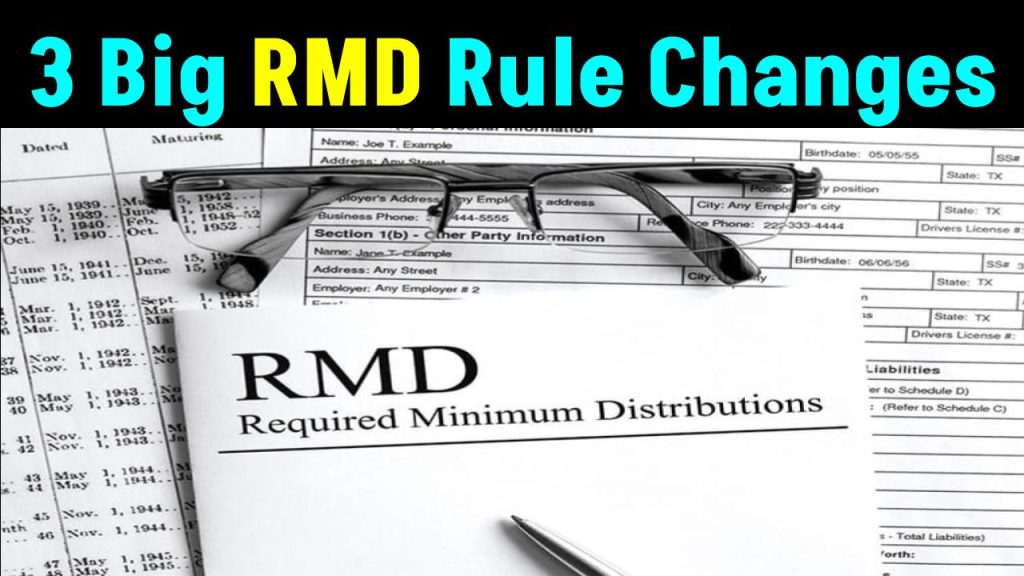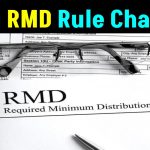
Recent legislative updates have significantly changed the rules governing Required Minimum Distributions (RMDs) from retirement accounts. These changes affect when and how retirees must withdraw funds, impacting retirement planning and tax strategies.
If you’re approaching retirement or managing retirement accounts, understanding these RMD rule changes is crucial to avoiding penalties and maximizing your savings.
3 Big RMD Rule Changes
| Key Change | Impact | Effective Year |
|---|---|---|
| Increased RMD Age | New age limits of 73 (2023-2032) and 75 (starting in 2033) | 2023 |
| No RMDs for Roth 401(k)s | Roth 401(k) holders no longer required to take RMDs | 2024 |
| Lower Penalties for Missed RMDs | Reduced from 50% to 25% (10% if corrected in 2 years) | 2023 |
The recent RMD rule changes offer greater flexibility and financial advantages for retirees. The higher RMD age, elimination of Roth 401(k) RMDs, and lower penalties for missed withdrawals provide opportunities to strategically manage taxes and retirement income.
Next Steps:
- Review your RMD schedule based on the new age limits.
- Consider Roth conversions for tax-free retirement growth.
- Avoid penalties by setting up automatic withdrawals.
For official IRS guidance, visit IRS RMD Rules.
Also Check: New IRS Crypto Rules: Stricter Reporting, But a Temporary Safe Harbor Offers Relief!
Increased Starting Age for 3 Big RMD Rule Changes
The SECURE 2.0 Act has changed the age at which you must start withdrawing funds from tax-deferred retirement accounts like 401(k)s and traditional IRAs.
New RMD Age Requirements
- If you turn 73 between 2023 and 2032: Your RMDs must begin by April 1 of the following year.
- If you turn 75 in 2033 or later: You don’t have to take RMDs until age 75.
Example:
- John, age 72 in 2024, doesn’t have to take an RMD until April 1, 2026.
- Sarah, age 74 in 2034, will start RMDs at age 75 in 2035.
Why it Matters:
- More time to let investments grow tax-deferred.
- Opportunity for Roth conversions before RMDs start.
Action Plan
- Check your birth year and new RMD start date.
- Work with a financial advisor to optimize your retirement withdrawal strategy.
3 Big RMD Rule Changes: No RMDs for Roth 401(k) Accounts
Before 2024, Roth 401(k)s were subject to RMDs, unlike Roth IRAs. The SECURE 2.0 Act eliminates RMDs for Roth 401(k) accounts, making them function like Roth IRAs.
Key Benefits
- No forced withdrawals, allowing tax-free growth indefinitely.
- More flexibility in estate planning—heirs can inherit and stretch withdrawals.
Example:
- Mike, age 74, has $500,000 in a Roth 401(k). Before 2024, he would have had to withdraw RMDs, but now, his savings continue growing tax-free.
Action Plan
Consider rolling over a traditional 401(k) to a Roth 401(k).
If nearing retirement, convert pre-tax savings into a Roth for tax-free withdrawals later.
Also Check: New Traffic Rules: DRIVING WITHOUT A HELMET OR SEAT BELT? FASTag Will Auto Fine You & Cancel Your License!
3 Big RMD Rule Changes: Lower Penalties for Missed RMDs
Previously, missing an RMD resulted in a 50% penalty on the required amount. The new rule reduces this penalty to 25%, and if corrected within two years, it drops to 10%.
Example:
- Emma forgets to take a $10,000 RMD in 2024.
- Old rule: $5,000 penalty (50%).
- New rule: $2,500 penalty (25%).
- If corrected within two years: $1,000 penalty (10%).
Why it Matters:
- The lower penalty reduces the financial burden of honest mistakes.
- Prompt correction further minimizes tax liabilities.
Action Plan
Set up automatic RMD withdrawals from your brokerage or IRA account.
Work with a tax professional if you miss an RMD to fix it within two years.
Also Check: PM Kisan 19th Installment ALERT! These Farmers Won’t Get Paid—Some May Have to RETURN Money!
3 Big RMD Rule Changes (FAQs)
What is an RMD, and why do I have to take it?
An RMD (Required Minimum Distribution) is a mandatory withdrawal from tax-deferred retirement accounts (like a 401(k) or traditional IRA) to ensure the government collects taxes on pre-tax contributions.
How do I calculate my RMD?
Your RMD is based on your account balance at the end of the previous year and your life expectancy factor (from IRS tables). The IRS provides a worksheet here.
What happens if I don’t take my RMD?
If you miss an RMD, you’ll face a 25% penalty (or 10% if corrected within two years).
Do Roth IRAs have RMDs?
No. Roth IRAs do not require RMDs during the original account holder’s lifetime.
Can I withdraw more than my RMD?
Yes! You can withdraw more than the required amount, but only the RMD minimum is mandated









